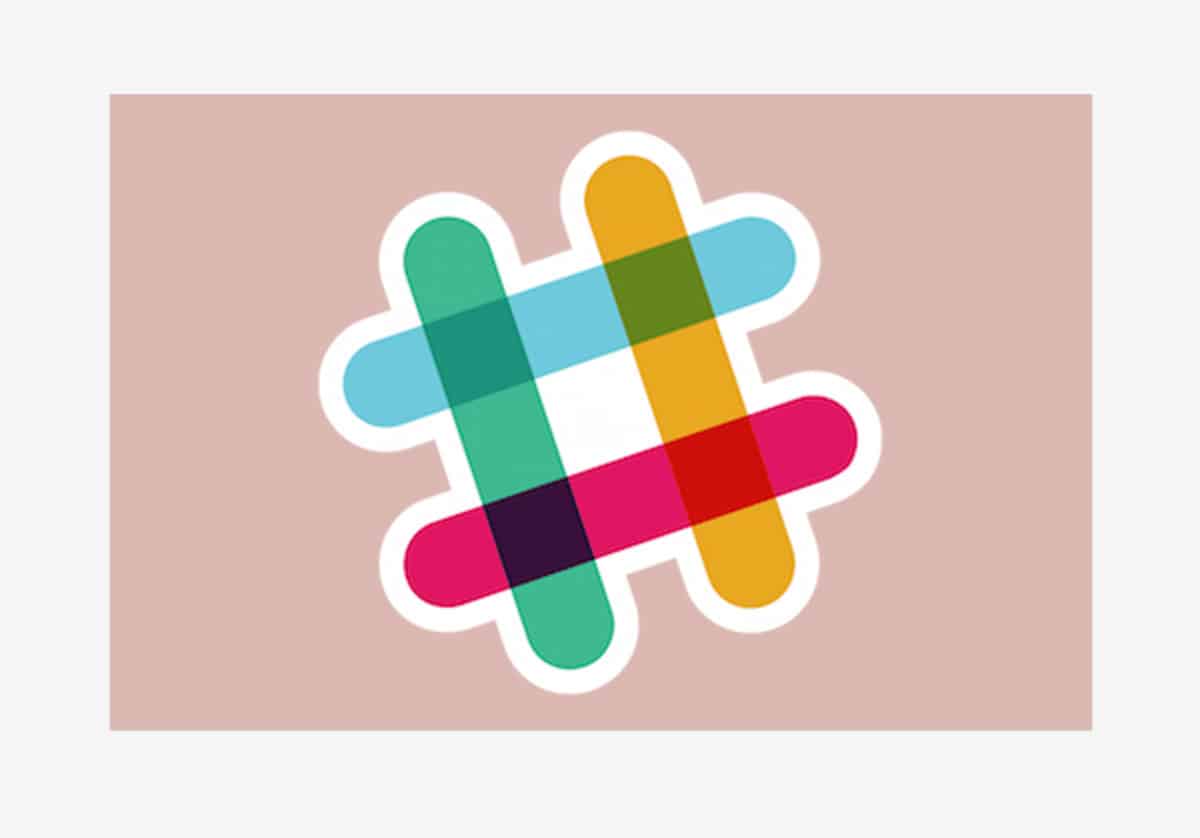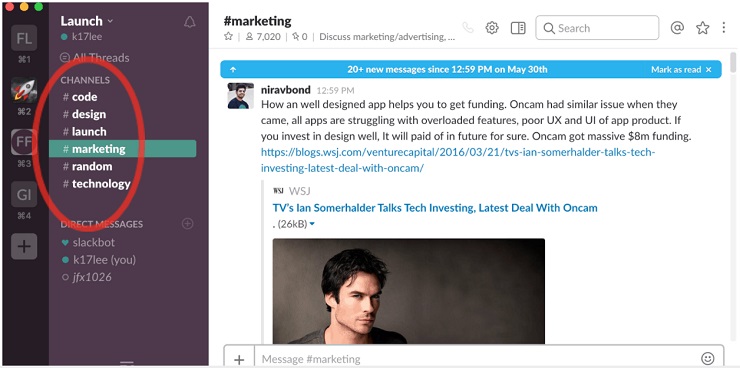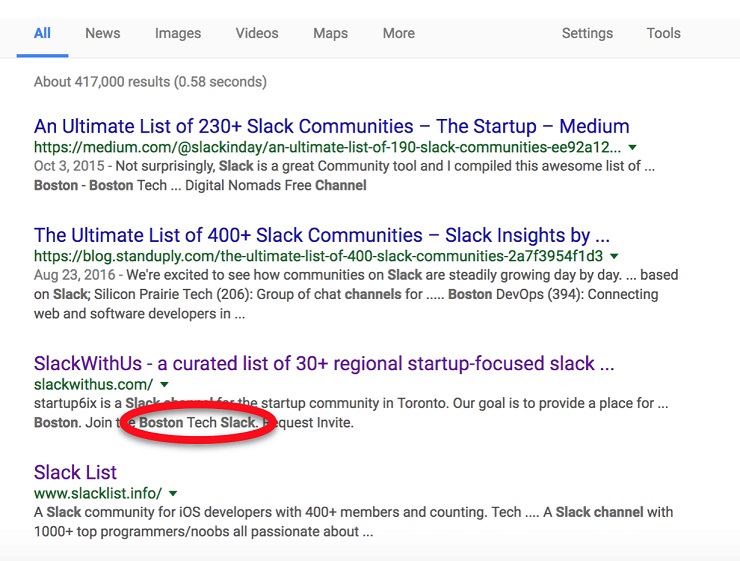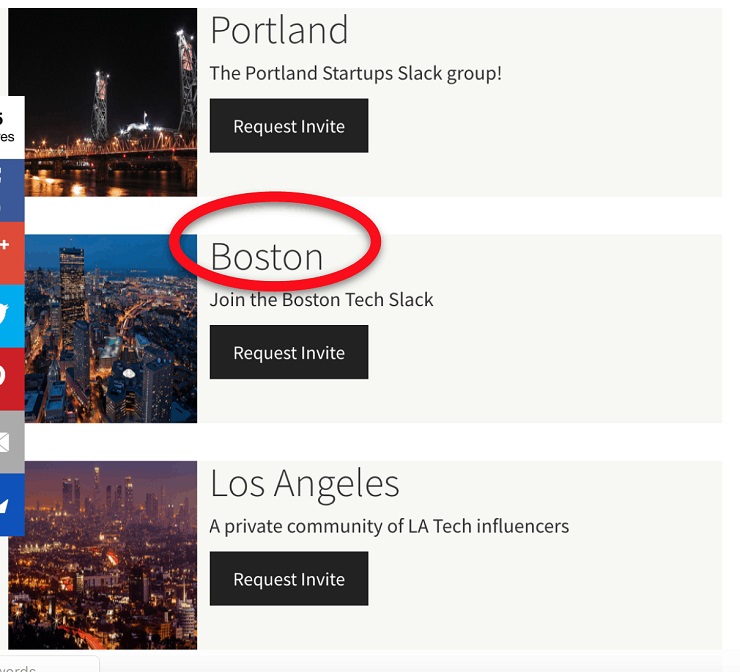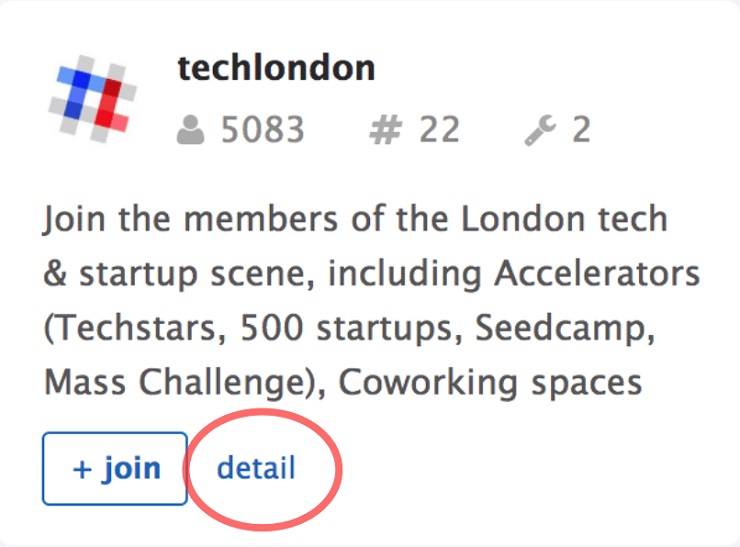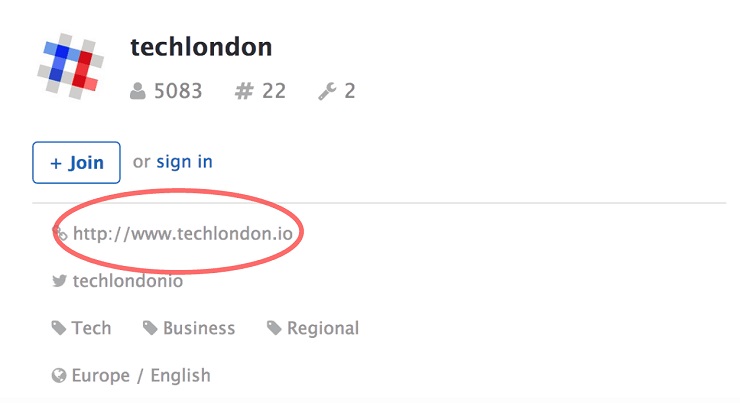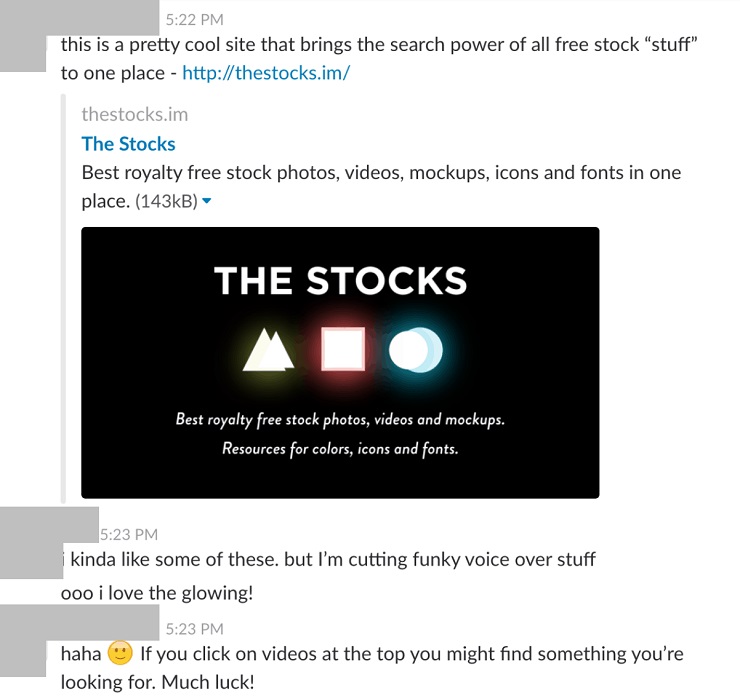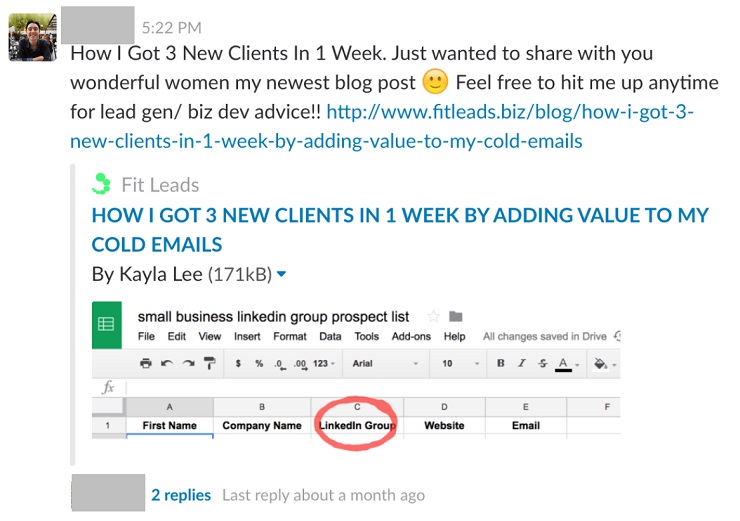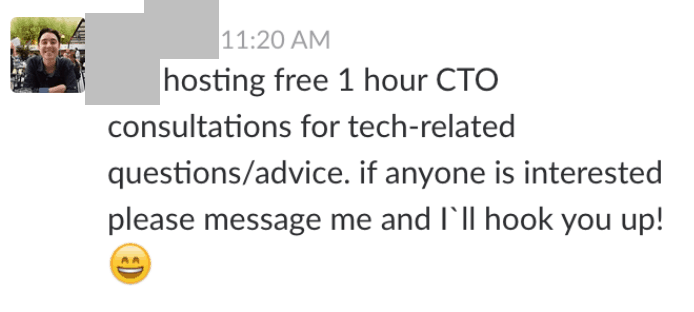Don’t we all love finding creative ways to sell our products and services? Don’t our prospects respond best when they don’t feel sold to? This is exactly what I discovered when I stumbled accidentally into social selling with Slack.
There’s a good chance you’ve used Slack for your work communications, especially if you have a remotely based team. But, if you’re like me, you hadn’t considered it as a way to generate leads.
The idea occurred to me when I heard a friend mention that he had sold some speakers in a Charlottesville, Virginia community Slack channel. It dawned on me that there might be more to Slack than just my keeping in touch with my company’s team.
I wondered, if my friend could sell speakers, could I sell my company’s services? I did some research and found that there are many public business channels to join—startup channels, design and marketing channels, channels for different cities, and so much more. I realized that Slack is a social network for communities and businesses, and there’s a lot of potential for both. In this post, I’ll show you exactly how I used Slack to triple my company’s pipeline with social selling.
What Is Slack?
Slack is a cloud-based communication tool originally intended for teams and businesses. It’s like a chatroom for collaborating with teammates and sharing content and documents. The goal of Slack is to increase team productivity. Teams using Slack indeed report increased productivity and experience an average of 48% decrease in email usage.
Within Slack, you can chat with your entire team or in one-on-one messages. The platform can be accessed via the web, desktop application, and on a mobile app.
A Crash Course on the Anatomy of Slack
First, let’s get on the same page about what you’ll find in Slack. It’s mainly made up of teams and channels. Teams are what you sign up to join, along with a number of other members united behind a company, theme, community, etc. Within each team you join, there are channels, which function like chat rooms.
The words team, workplace, and community are synonymous here. They are the parent groups that host the smaller channels, each labeled with a hashtag.
Community/team names are found here:
Channels are hashtagged and organized within each community/team like so:
Posting in a channel means that whatever you share is visible to everyone in that channel.
Direct messages, on the other hand, are just between you and another person. You can also direct message multiple people at once, like a group text.
Now that you have the nuts and bolts down, let’s take a look at how to start using Slack to generate leads.
How to Join Slack Communities Relevant to Your Business
The first step is to join communities and teams that are going to have members relevant to your target market. There’s a list of Slack communities you can join, but you’ll have to search for the many other communities that are out there.
For example, let’s say you’re a financial consultant that helps tech companies in Boston.
You can perform a quick google search, like this:
The search will bring up any links to relevant Slack teams. Click on one that’s relevant:
Once you click on a link, you’ll usually see lists of different communities like the one pictured below. From here, you can choose the team that’s most appropriate and follow instructions to join.
You may be prompted to fill out an application about why you’re a good fit for the team. Make sure you are honest about how you can benefit the community members. You may be asked to pay a one-time fee. I’ve paid $20 to $30 to join a couple of the communities I’m a part of and it was well worth the small investment.
I haven’t come across any Slack team “scams” as of yet, but you should do some research before paying to join any team. The communities listed on slacklist.info are reputable and many of them are free to join, so long as you meet the admin’s requirements. I’d say the best way to avoid a scam is to make sure you’re joining a team that has a website or landing page that you can review for details about the group. For example:
Slofile is another great site for finding Slack teams to join. You can view a brief description of the team and more detail, like so:
Once you click for more detail you’ll be able to view the community’s website:
Many of the Slack communities have active meetups and networking opportunities in their respective cities. Looking for groups with this type of activity is a great way to avoid any scam.
Social Selling Success With Slack Means Joining the Conversation
What’s great about Slack is that it’s laid back and people are there for the purpose of helping one another, learning, sharing, getting things done, and networking! This is a perfect environment for sharing and helping folks out while representing your business.
You’ll be surprised at the number of people asking for help with all types of work: accounting, marketing, writing, business development, funding, programming, design, and so much more! There are many opportunities to chime in and make lasting impressions in various channels.
Below are some best practices that tripled the number of projects in my pipeline within a matter of weeks.
1. Teach, don’t preach
Don’t be too long winded in team channels, rather, engage members with educational content. When sharing articles and content, have something to say about it that might trigger a discussion, much like you would share something in a LinkedIn group.
Like this resource:
Or this blog post:
Or this article:
Each of these posts created ongoing conversation among members, and I’m sure they resulted in direct conversations as well, as many of the blog posts and resources I’ve shared have.
2. Offer a freebie
One of the best ways to generate leads is to offer something of value for free. It’s best if your free offering is tangible. For example, I help businesses generate leads, so I set up this free offer for 100 free prospects, where members can tell me which businesses they want to target and I deliver a CSV file of leads to them.
You can come up with your own “freebie” and offer it in Slack channels. If your company already has a free offering, then feel free to share that in your team. If you don’t currently offer something free to prospects, you should come up with something. Examples of free offerings I’ve helped my clients with include:
Free tech consultations for nonprofits: Prospects could make an hour-long appointment with an IT consulting firm where they would fix any issue prospects brought to the table. They also offered free snacks during the meetings!
Free webinar masterclass to improve sales performance: Webinars are a great way to generate leads, and they’re attractive to prospects because the best ones are full of valuable information!
Free wireframe sketch for new startups: Prospects that met with a design team would leave the meeting/call with a new wireframe sketch of their idea, along with a product road map.
I find it best to keep it short and to the point when posting your freebie. Make sure your post is relevant to the team you’re speaking to.
Here’s a post I made for a client’s IT consultations. Several people direct messaged me to set up an appointment:
Make your freebie valuable to your prospects (like my client did!) and pretty soon you’ll have a reputation…and fans!
3. Don’t be there for your own benefit
Don’t blast channels with salesy messages, as that conditions team members to ignore most of your comments and posts. Remember, people want to learn from one another in these communities. Share valuable content and offer free help. If you’re a marketer participating in a #marketing channel, share actionable blog posts you’ve come across.
4. Post in the right channel
If you’re unfamiliar with Slack, channels are designated “rooms” within a Slack team. For example, the community New York Startups may be divided into the following channels: #general, #legal, #marketing, #design, #programming, and #resources.
Channels are like miniature target markets. Therefore, people can get annoyed when you post something about marketing in the legal channel. Posting in the wrong channel might also lead to missed opportunities. For example, if you share an interesting design article in the #general channel, you’re missing out on impressing the people who are really into design, because odds are, they’re more attentive to the design channel.
5. Don’t be inappropriate
Not to state the obvious, but if it’s NSFW, then don’t share it. Social selling etiquette in Slack should be similar to that of LinkedIn, as most people are participating in these communities for business purposes. It’s important to always uphold your company values and most often you’ll find that people in Slack communities are keeping discussions professional.
6. Answer questions
When people ask questions related to your field, answer them! You’ll establish yourself as an authority and you’ll see higher returns when doing so.
When answering questions you need to decide whether to do it publicly or privately. In Slack, a private message is a direct message to an individual and is not visible to the rest of the community. When deciding between a public or private message ask yourself the following:
Is this going to be a long answer? If yes, then answer it privately. Send a friendly direct message introducing yourself to the person who asked the question, and let them know that you’re messaging them privately to help answer the question they posted in a public channel.
Could this lead to a business opportunity? If yes, then answer it quickly and briefly in the public channel so that others can see that you’re knowledgeable on the subject. Then, followup with a direct message to the prospect introducing yourself, letting them know you’d be happy to provide more insight, and ask them the first required question to qualify!
You want to answer questions publicly when you can, as this will increase your authority in your field within the community—just make sure the public answer is not long winded, as you can follow up with any likely qualified prospects via direct message.
7. Ask questions
One of the greatest things about these communities is that you can ask anything! I’ve gotten assistance with copy editing, design, and so much more, by simply popping into one of my communities and posting my question! This also keeps you engaged with the team and will open up a wealth of networking opportunities, as you’ll speak directly with more people. Remember to post your questions in the appropriate channels as well!
8. Follow up with direct messages
Your DMs are now part of your network. Make sure you’re following up with your new connections in the same way that you would follow up with a prospect via email or phone. I like to get the email address of any prospect discovered in Slack so that I can add them to my CRM and remind myself to stay in touch. I usually follow up via email, but I also engage my prospects in Slack when it’s appropriate.
A Few of My Favorite Slack Communities
- #femalefounders – This team is a wonderful place for women entrepreneurs to connect and support one another. Most questions get answered relatively quickly, and my private conversations in this team have been both meaningful and valuable to my business. I’ve gotten plenty of leads from this channel, and one client! The cost to join is a one-time fee of $30.
- #launch – This is a team of thousands of startup founders, employees, and enthusiasts. There are channels for design, technology, marketing, and more. There are often discussions about current events in the startup world and tech industry. People share a lot of great advice and most questions are answered very quickly. I’ve gotten several leads from this channel!
- #SmallBiz – This channel is great for anyone running a small business. It’s packed with helpful tips and advice, and there are plenty of opportunities to connect and network with like-minded individuals!
There are a ton of great ways that businesses can generate leads. Slack just so happens to be a great tool for networking and connecting with prospective clients. Its laid back vibe creates an environment perfect for building trust and relationships with prospects, through shared resources, advice, and more.
I highly recommend entrepreneurs give social selling in Slack a try, especially B2B product/service companies.
Have you experimented with social selling in Slack? Got any favorite channels? Let us know in the comments below!
